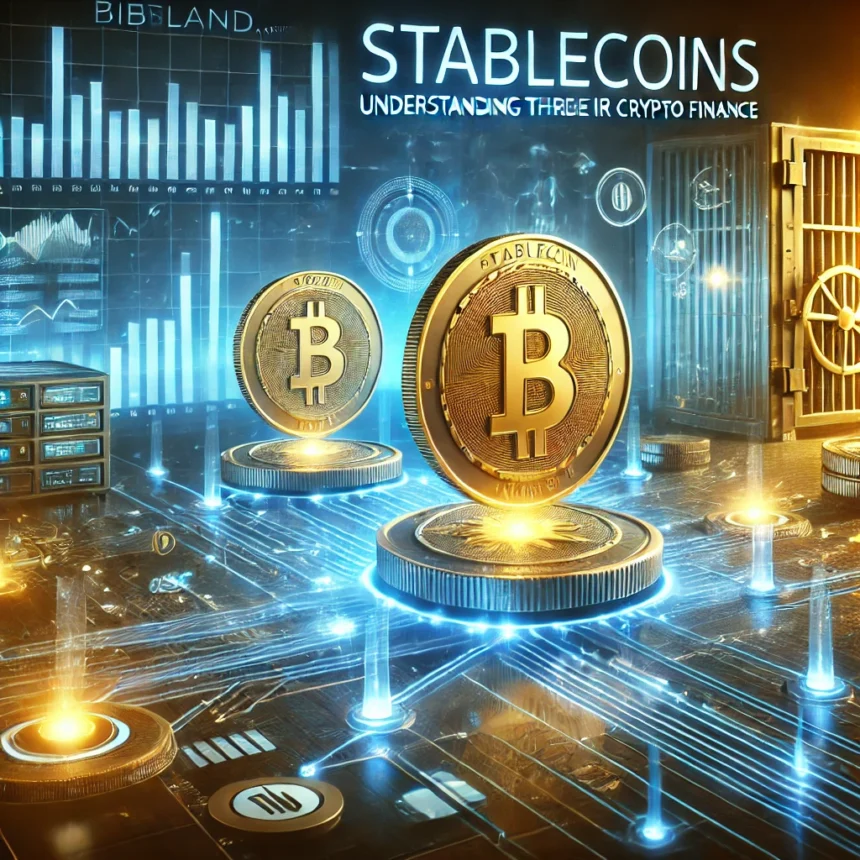Stablecoins have become an essential part of the cryptocurrency ecosystem, providing the stability needed for transactions, trading, and decentralized finance (DeFi). Unlike other cryptocurrencies, which are highly volatile, stablecoins maintain a fixed value by being pegged to stable assets such as fiat currencies, commodities, or even other cryptocurrencies.
Biitland.com is a leading platform that provides insights into the crypto market, including detailed information about stablecoins. In this article, we will explore the role of stablecoins, their types, advantages, challenges, and how Biitland.com helps users stay informed about this growing sector.
What Are Stablecoins?
Stablecoins are a category of cryptocurrencies designed to offer price stability by being backed by reserve assets or using algorithmic mechanisms. The primary goal of stablecoins is to combine the benefits of cryptocurrencies, such as decentralization and fast transactions, with the reliability of traditional financial systems.
Unlike Bitcoin or Ethereum, which can experience drastic price fluctuations, stablecoins aim to keep their value steady. This makes them useful for daily transactions, savings, and as a hedge against market volatility.
Types of Stablecoins
There are four main types of stablecoins, each with different mechanisms to maintain price stability.
1. Fiat-Backed Stablecoins
Fiat-backed stablecoins are the most common type and are pegged to traditional currencies such as the U.S. dollar, euro, or yen. These stablecoins are backed by reserves of actual fiat money held in banks. Each unit of a fiat-backed stablecoin represents an equivalent amount of fiat currency.
Examples:
- USDT (Tether) – Pegged to the U.S. dollar and backed by cash reserves.
- USDC (USD Coin) – Maintains a 1:1 peg with the U.S. dollar and is regularly audited for transparency.
- BUSD (Binance USD) – Issued by Binance in partnership with financial institutions.
Fiat-backed stablecoins are widely used for trading, payments, and DeFi applications.
2. Crypto-Backed Stablecoins
Unlike fiat-backed stablecoins, crypto-backed stablecoins use cryptocurrencies as collateral. Due to the volatility of crypto assets, these stablecoins are often over-collateralized, meaning that the value of the collateral exceeds the value of the issued stablecoins.
Examples:
- DAI – Issued by MakerDAO, backed by Ethereum and other cryptocurrencies.
- sUSD – A synthetic stablecoin backed by crypto assets.
Crypto-backed stablecoins are decentralized and do not rely on banks, making them more censorship-resistant.
3. Commodity-Backed Stablecoins
These stablecoins are backed by tangible assets like gold, silver, or other commodities. Their value is tied to the market price of the backing asset, providing stability through physical reserves.
Examples:
- PAXG (Paxos Gold) – Backed by gold reserves, allowing users to hold digital gold.
- Tether Gold (XAUT) – Represents ownership of actual gold stored in vaults.
Commodity-backed stablecoins provide an alternative to fiat-backed ones and are often used as a hedge against inflation.
4. Algorithmic Stablecoins
Algorithmic stablecoins do not rely on collateral but instead use smart contracts and algorithms to control supply and demand, maintaining their peg. When the price rises above the peg, new coins are minted; when it falls below, supply is reduced.
Examples:
- UST (TerraUSD) – Previously a popular algorithmic stablecoin before its collapse in 2022.
- FRAX – A hybrid algorithmic stablecoin partially backed by collateral.
Algorithmic stablecoins aim to be decentralized but are often more risky due to their reliance on complex mechanisms.
Advantages of Stablecoins
Stablecoins offer several benefits that make them useful for individuals, businesses, and financial institutions.
1. Price Stability
Since they are pegged to stable assets, stablecoins provide a reliable store of value compared to volatile cryptocurrencies like Bitcoin and Ethereum.
2. Fast and Low-Cost Transactions
Stablecoins enable instant and low-cost cross-border payments, making them a great alternative to traditional banking systems.
3. Integration with DeFi
Stablecoins play a crucial role in DeFi platforms, allowing users to lend, borrow, and trade without exposure to extreme market fluctuations.
4. Financial Inclusion
Stablecoins allow people in developing countries with limited access to banks to store and transfer value securely.
5. Hedge Against Inflation
Stablecoins backed by strong fiat currencies or commodities can act as a hedge against inflation, especially in countries with unstable economies.
Challenges and Risks of Stablecoins
Despite their benefits, stablecoins also come with risks that users should be aware of.
1. Centralization Risk
Fiat-backed stablecoins are usually controlled by centralized entities, which raises concerns about transparency and regulation.
2. Regulatory Uncertainty
Governments and financial institutions are still developing regulations for stablecoins, which could impact their adoption and usage.
3. Counterparty Risk
Users must trust that the issuing entity holds sufficient reserves to back the stablecoin. In the past, some stablecoin issuers have faced criticism for lacking full transparency.
4. Depegging Risks
If a stablecoin loses its peg due to mismanagement, market manipulation, or lack of sufficient reserves, it can cause significant financial losses for users.
5. Algorithmic Stablecoin Failures
Algorithmic stablecoins, while innovative, have proven to be unstable in some cases. The collapse of TerraUSD (UST) in 2022 demonstrated the risks associated with algorithmic mechanisms.
How Biitland.com Helps Users Understand Stablecoins
Biitland.com is a trusted platform offering in-depth insights into stablecoins and the broader cryptocurrency market. The website provides:
- Comprehensive Guides – Educational resources explaining the different types of stablecoins and how they work.
- Market Analysis – Up-to-date information on stablecoin performance and adoption.
- News & Updates – Coverage of regulatory developments and innovations in the stablecoin space.
- Investment Insights – Expert opinions on the best stablecoins for different use cases.
Read also: Scottie Scheffler Has Denied Rory McIlroy Putter Claims
Conclusion
Stablecoins have revolutionized the crypto market by offering a reliable digital currency that combines the benefits of crypto with the stability of traditional assets. Whether you are an investor, trader, or someone looking for a stable store of value, stablecoins provide numerous advantages.
However, they are not without risks, and users must stay informed about regulatory changes, transparency issues, and the overall market landscape. Platforms like Biitland.com play a crucial role in educating and guiding users through the complexities of stablecoins.
By understanding how stablecoins work, their benefits, and their risks, you can make informed decisions and navigate the evolving world of digital finance with confidence.






